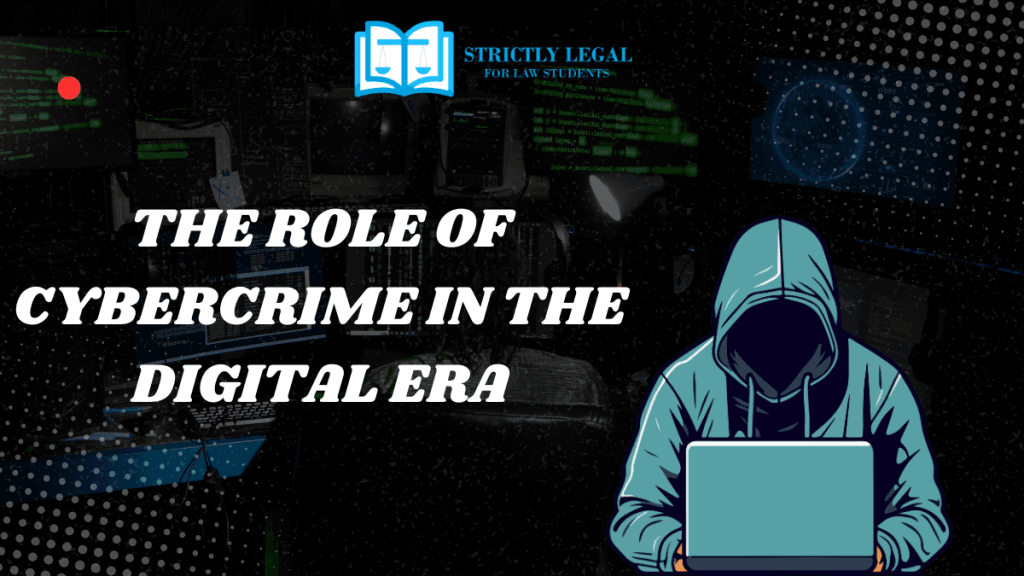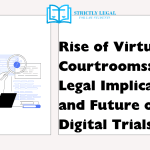In today’s increasingly digital world, technology and criminal law are becoming more intertwined than ever before. The rise of the internet, social media, e-commerce, and digital communication has not only brought significant benefits to society but has also created new opportunities for cybercrimes to flourish. As a result, the legal systems around the world, including India, have been forced to adapt and evolve to tackle these emerging threats.
Cybercrime, often referred to as computer crime, involves any illegal activity that is conducted using digital devices, networks, or the internet. The challenges posed by these crimes are unique and complex, requiring a comprehensive approach to legal and technological frameworks. This article explores the intersection of technology and criminal law, focusing on the role of cybercrime in the digital era.
Table of Contents
Understanding Cybercrime
Cybercrime refers to criminal activities that target computer systems, networks, and the data stored within them, or are conducted using the internet as a tool for illicit purposes. Common forms of cybercrime include:
Hacking: Unauthorized access to computer systems or networks to steal, alter, or destroy data.
Phishing: Fraudulent attempts to acquire sensitive information such as passwords, credit card details, or personal identification details through deceptive emails or websites
.Cyberstalking: Harassment or stalking through digital platforms, which can cause significant emotional and psychological harm to victims.
Identity Theft: Using another person’s personal information to commit fraud or other illegal activities.
Online Fraud: Fraudulent schemes carried out through digital means, such as scams involving e-commerce, online banking, or investment fraud.
Child Exploitation: Distribution and possession of illegal content, including child pornography, or exploitation through online platforms.
Ransomware Attacks: Malicious software that locks users out of their own data, demanding a ransom to restore access.
As the internet becomes more pervasive, so too does the reach and complexity of cybercrime. The digital nature of these crimes often crosses international borders, making them harder to investigate, prosecute, and regulate.
Cybercrime Laws in India
In India, the primary legal framework for addressing cybercrime is the Information Technology Act, 2000 (IT Act, 2000), which was introduced to deal with issues related to online crimes and electronic commerce. While the IT Act provides a foundation for regulating cybercrime, several amendments and additional laws have been enacted to address new and evolving cyber threats:
The Information Technology Act, 2000 (IT Act):
The IT Act deals with offenses such as hacking, identity theft, cyber terrorism, and email spoofing. Section 66 of the IT Act penalizes hacking by making unauthorized access to computer systems an offense. Section 66C and 66D address identity theft and cyber fraud, including stealing passwords or impersonating someone online.
The Indian Penal Code (IPC), 1860
The IPC also applies in cases of cybercrime, especially when traditional crimes such as fraud, defamation, or harassment occur through digital means. For example, Section 499 [Now Section 356(1) BNS] can apply when false information is spread online, and Section 354D can be invoked for online harassment.
The Cyber Crime Prevention against Women and Children (CCPWC) Rules
These rules focus on the prevention of cybercrimes against women and children, including online sexual abuse and exploitation.
The Digital Personal Data Protection Act, 2023
A significant step towards protecting personal data, the DPDP aims to safeguard citizens’ privacy in the digital world. The Bill is still under review, but it will likely set a framework for handling data breaches and misuse.
The National Cyber Crime Reporting Portal (NCRP)
The government has launched the NCRP to provide a centralized platform for reporting cybercrimes, making it easier for citizens to report incidents of cybercrime and track investigations.
The Role of Technology in Cybercrime
Technology plays a dual role when it comes to cybercrime. On one hand, technology facilitates cybercrime, providing criminals with the tools and platforms to carry out illegal activities. On the other hand, technology is also an essential tool in combating cybercrime through cybersecurity measures and digital forensics.
Digital Forensics and Cyber Investigations
Cybercrime investigations often rely heavily on digital forensics, which involves the identification, preservation, extraction, and analysis of data from digital devices like computers, smartphones, and servers. Cyber investigators use specialized software and techniques to trace criminal activities and gather evidence that can be presented in court. These tools help law enforcement agencies track down cybercriminals, identify IP addresses, analyze communication logs, and recover deleted files.
Encryption and Anonymity
One of the main challenges in tackling cybercrime is the use of encryption and anonymity tools by cybercriminals. Encryption can protect sensitive data, but it can also shield criminal activity from detection. Similarly, tools like VPNs (Virtual Private Networks) and dark web services provide criminals with a cloak of anonymity, making it difficult to trace their location and identity.
Artificial Intelligence and Machine Learning
Emerging technologies such as artificial intelligence (AI) and machine learning (ML) are now being used to combat cybercrime. AI systems can detect unusual patterns of behavior, identify phishing attempts, and analyze large volumes of data for suspicious activities. These technologies enable proactive prevention, faster detection of cyber threats, and enhanced response strategies.
Conclusion
The intersection of technology and criminal law is an ongoing challenge that requires constant adaptation. While cybercrime poses a significant threat to individuals, businesses, and governments, legal frameworks such as the IT Act and the IPC provide the necessary tools for prosecution. As technology continues to evolve, the role of law enforcement, the judiciary, and policymakers will be pivotal in combating cybercrime and ensuring that the digital world remains secure, ethical, and lawful for everyone. Law students, legal professionals, and cybersecurity experts must collaborate to shape a future where technology serves the public good and minimizes the risk of cybercrime.

Law student.
Turning legal insights into engaging narratives.





